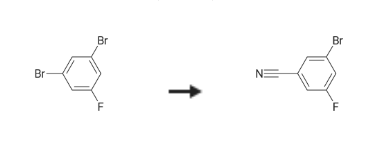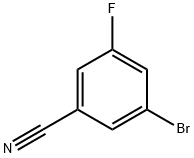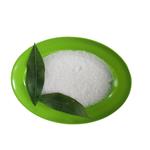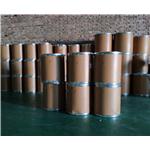Synthesis
3-Bromo-5-fluorobenzonitrile is synthesised using 1,3-dibromo-5-fluorobenzene as a raw material by chemical reaction. The specific synthesis steps are as follows:
A 250-mL round-bottom flask equipped with a magnetic stir bar was charged with 1,3-dibromo-5-fluorobenzene (7.70 g, 30.3 mmol), DMF (45 mL), pyridine (4.9 mL), and copper (I) cyanide (2.72 g, 30.3 mmol) under nitrogen.
A reflux condenser was attached to the flask.
The green, cloudy mixture was stirred at reflux for 3 h.
Once lower Rf impurities were observed, the reaction was allowed to cool to room temperature.
The reaction was quenched with 30 mL of ether, and a precipitate formed in the dark solution.
The precipitate was gravity-filtered though Celite.
The filtrate was rinsed three times with ether (100 mL/50 g bromide).
The isolated solution was added to a separatory funnel.
The organic layer was washed with a 2:1 mixture of water and concentrated ammonium hydroxide (30 mL), followed by saturated ammonium chloride solution (2*30 mL) and saturated sodium bicarbonate (30 mL).
The aqueous layers were extracted with ether (3*40 mL).
The organic layers were combined and dried over anhydrous sodium sulfate.
The product was purified by flash column chomatography to yield 3-bromo-5-fluorobenzonitrile (2.10 g, 35percent).
1H NMR (400 MHz, CDCl3) δ 7.62 (s, 1H), 7.54-7.50 (m, 1H), 7.35-7.32 (m, 1H).






